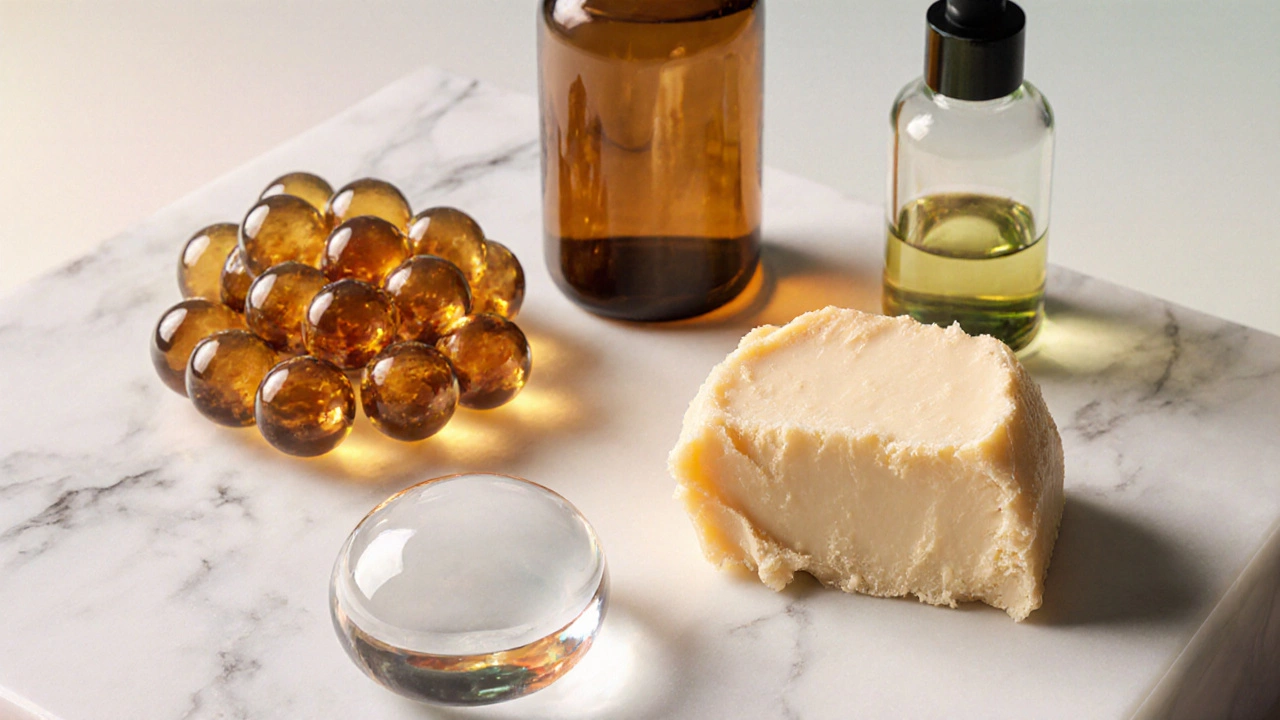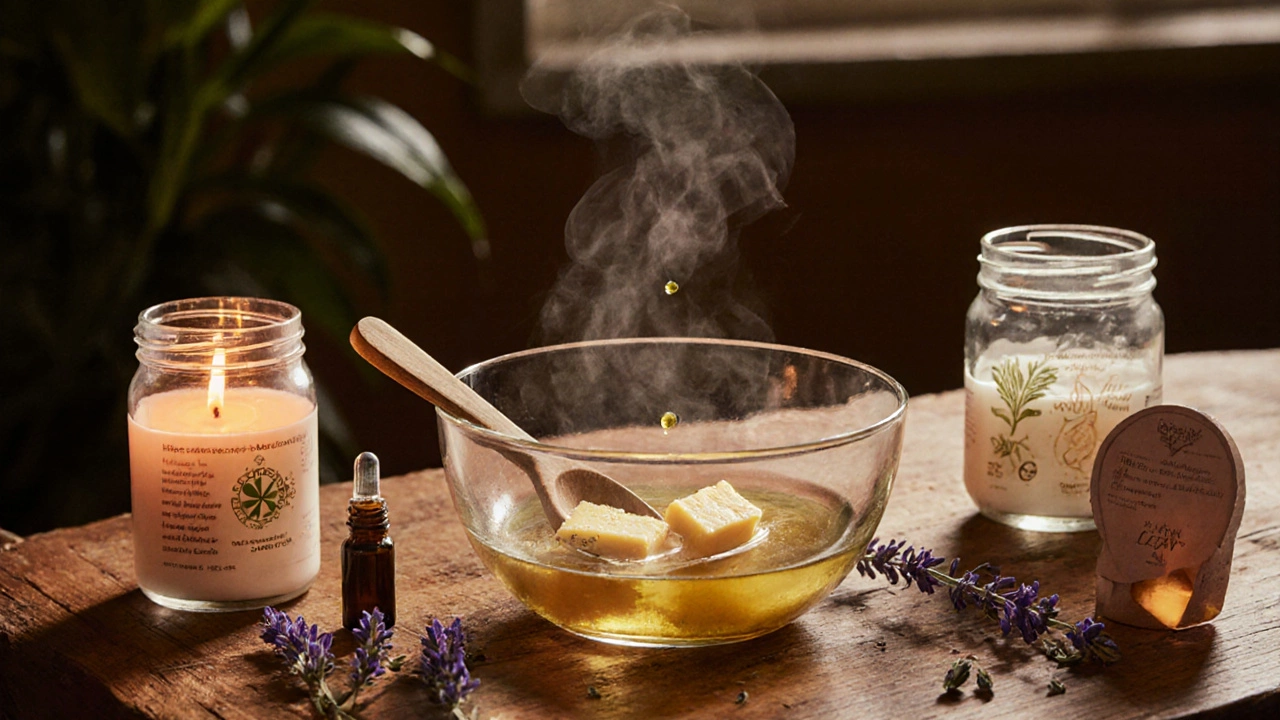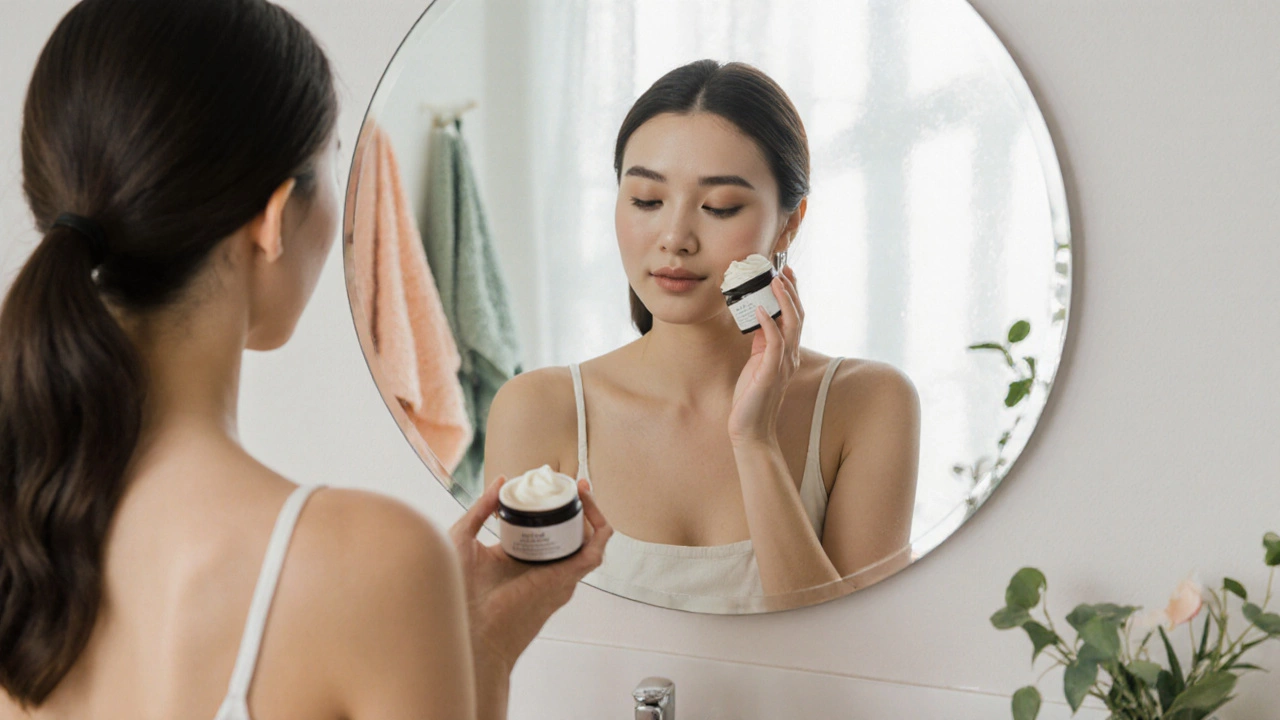Skin Type & Moisturizer Finder
Find Your Perfect Moisturizer
Select your skin type to get personalized ingredient recommendations and product suggestions based on the article's research.
Imagine waking up, looking in the mirror, and seeing skin that feels supple, hydrated, and calm - no tightness, no flaky patches. That glow usually starts with the right healthiest moisturizer. If you’ve ever wondered what makes a moisturizer truly good for your skin, you’re in the right place. This guide breaks down the science, the ingredients, and the label tricks that separate a nourishing daily cream from a product that does more harm than good.
What a Moisturizer Really Is
When you search for a Moisturizer is a skin‑care product that adds moisture and creates a barrier to keep it from evaporating, you’re looking at a formula built around three core functions: hydration, occlusion, and emolliency. Hydration pulls water into the top layers of skin, occlusion traps that water, and emolliency smooths the surface. The best products balance all three without loading the skin with irritants.
Why Ingredient Quality Beats Marketing Hype
Most moisturizers list a laundry list of chemicals on the back, but not all of them help your skin. The healthiest options rely on well‑researched actives that mimic what the skin naturally produces. Below are the key ingredients you should hunt for, each explained with its own micro‑data tag.
- Hyaluronic Acid is a humectant that can hold up to 1,000 times its weight in water, pulling moisture from the environment into the skin. Look for molecular weights under 50 kDa for deeper penetration.
- Ceramides are lipid molecules that form the skin’s protective barrier, preventing water loss and keeping pollutants out. A formula with at least three types (e.g., Ceramide NP, AP, and EOP) mimics the natural barrier.
- Shea Butter is an emollient derived from the nuts of the African shea tree, rich in stearic and oleic acids that soften the skin. Choose cold‑pressed, unrefined butter for maximum antioxidants.
- Jojoba Oil is a liquid wax that closely resembles human sebum, helping to balance oily skin without clogging pores. It also contains vitamin E and B‑complex nutrients.
- Niacinamide is a form of vitamin B3 that improves the skin’s barrier function, reduces redness, and regulates oil production. Effective at concentrations of 2‑5%.
- Vitamin E is a potent antioxidant that protects skin cells from free‑radical damage caused by UV exposure and pollution. Often paired with ferulic acid for a synergistic effect.
Reading Labels: Certifications and Claims That Matter
Organic certification isn’t just a marketing badge; it tells you the product meets strict standards for pesticide‑free sourcing and sustainable farming. Look for the following certifications on the packaging:
- USDA Organic means at least 95% of the ingredients are certified organic, with the remaining 5% on an approved list.
- Ecocert is a European certification that requires a minimum of 95% organic content and bans synthetic fragrances.
- COSMOS‑standard is a pan‑European label that ensures not only organic content but also environmentally friendly packaging.
Beyond certifications, pay attention to the pH level. A skin‑friendly moisturizer sits between pH 4.5 and 5.5, matching the skin’s natural acidity and supporting the acid mantle.

Top 5 Healthiest Moisturizers for Different Skin Types
- PureGlow Botanical Cream - USDA‑organic, high in shea butter and hyaluronic acid; ideal for dry, mature skin.
- EcoSkin Balance Lotion - Ecocert‑certified, lightweight gel‑cream with niacinamide and jojoba oil; perfect for oily or combo skin.
- GreenLeaf Hydrating Serum‑Moisturizer - COSMOS‑standard, contains a blend of ceramides, vitamin E, and botanical extracts; great for sensitive skin prone to redness.
- NatureRoot Reef‑Safe Balm - Marine‑derived ingredients, reef‑friendly, with marine collagen and hyaluronic acid; best for active lifestyles and post‑sun care.
- SimpleEarth Daily Cream - Minimalist formula with only 7 ingredients, all organic; excellent for minimalist routines and those avoiding fragrance.
These examples illustrate how the right combination of actives, certifications, and texture can meet specific skin concerns without compromising health.
Comparison Table: Key Features at a Glance
| Product | Main Hydrator | Barrier Boost | Best For | Price (USD) |
|---|---|---|---|---|
| PureGlow Botanical Cream | Hyaluronic Acid | Ceramides + Shea Butter | Dry / Mature | 45 |
| EcoSkin Balance Lotion | Jojoba Oil | Niacinamide | Oily / Combo | 38 |
| GreenLeaf Hydrating Serum‑Moisturizer | Hyaluronic Acid | Ceramides + Vitamin E | Sensitive / Redness | 50 |
| NatureRoot Reef‑Safe Balm | Marine Collagen | Shea Butter | Active / Post‑Sun | 42 |
| SimpleEarth Daily Cream | Jojoba Oil | Shea Butter | Minimalist / Fragrance‑Free | 30 |

Common Pitfalls and How to Avoid Them
Even with the best ingredients, a moisturizer can become a problem if it’s packed with hidden irritants. Watch out for these red flags:
- Heavy fragrances - synthetic perfume can trigger allergic reactions, especially on sensitive skin.
- Alcohol denat. - quick‑drying but strips natural oils, leading to rebound oil production.
- Silicones like dimethicone - create a smooth feel but can trap impurities if not paired with proper cleansing.
- Parabens - preservatives that have raised concerns about hormone disruption.
Choosing a product that lists only a few, recognizable ingredients and avoids the above will keep your skin barrier intact.
DIY Natural Moisturizer: Simple Recipe for Evening Use
- Combine 2 tbsp cold‑pressed Shea Butter is a solid fat that melts at body temperature, providing deep emolliency and 1 tbsp Jojoba Oil is a liquid wax that mimics skin’s natural sebum, offering balanced hydration in a glass bowl.
- Heat gently over a double boiler until fully melted.
- Remove from heat, add 5 drops of Vitamin E is an antioxidant that protects skin cells from oxidative stress and 3 drops of essential lavender oil (optional, for scent).
- Stir, let cool, and whisk until a creamy texture forms.
- Store in a clean jar and apply a pea‑size amount to clean skin before bed.
This recipe gives you full control over every ingredient, guaranteeing no hidden chemicals.
Quick Takeaways
- Focus on proven actives: hyaluronic acid, ceramides, niacinamide, and natural oils.
- Choose USDA‑Organic, Ecocert, or COSMOS‑standard certified products.
- Avoid synthetic fragrance, denatured alcohol, and unnecessary silicones.
- Match texture to skin type: richer creams for dry skin, gel‑light lotions for oily skin.
- Consider a simple DIY version if you want complete ingredient transparency.
What makes a moisturizer “organic”?
An organic moisturizer must contain at least 95% certified‑organic ingredients, no synthetic pesticides, and must meet the standards of a recognized body like USDA‑Organic or Ecocert. The remaining 5% can be only on an approved list of natural substances.
Can I use a heavy cream if I have oily skin?
Usually not. Oily skin benefits from lighter, water‑based formulas that contain humectants like hyaluronic acid and non‑comedogenic oils such as jojoba. Heavy creams with lots of butter can seal pores and lead to breakouts.
How often should I reapply moisturizer?
Twice daily is ideal - once after cleansing in the morning and again at night. If you live in a dry climate, a mid‑day top‑up can keep skin from feeling tight.
Is a higher price always a sign of better quality?
Not necessarily. Look for the ingredient list and certifications rather than the price tag. Some boutique brands charge premium for packaging alone.
Can I mix a DIY moisturizer with a commercial product?
Yes, as long as the textures are compatible. Adding a few drops of a natural oil to a light lotion can boost hydration without upsetting the formula.
